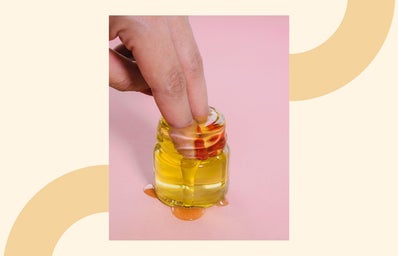Vaginismus, though fairly common amongst women, often goes unnoticed or even dismissed due to the lack of proper knowledge and awareness about vaginal health.
Even as a woman in her 20s, I have never come across the term vaginismus (before I wrote this article) and neither have my friends.
So what is vaginismus?
According to Hope&Her, vaginismus is “a condition where the muscles surrounding the entrance to the vagina involuntarily tighten[s], making penetration impossible or painfully uncomfortable.”
This often occurs during insertions such as when attempting to wear tampons, during intercourse and when undergoing a pelvic examination. This involuntary tightening of the pelvic floor especially at the vagina entrance and the pubococcygeus muscle (or PC muscle is a hammock-like muscle, found in both sexes, that stretches from the pubic bone to the tail bone forming the floor of the pelvic cavity and supporting the pelvic organs) group is often an unconscious reaction especially when one experiences vaginal insertions for the first time.
what ARE SOME CAUSES OF vaginismus?
Though not clearly known, vaginismus may be caused by both physical and non-physical effects, or a combination of both.
Physical causes include:
- Childbirth injuries like vaginal tears
- Pelvic trauma as a result of pelvic surgery, examinations etc.
- Physical abuse or assault
- Medical reasons (eg UTIs, yeast infections, STIs, eczema etc.)
- Age related changes like menopause or hormonal changes
- Lack of lubrication
Non-physical causes include:
- Anxiety disorders and stress
- Issues with your sexual partner
- Fear of sex or negative feelings about sex, perhaps due to past sexual abuse, rape or trauma
HOW TO IDENTIFY vaginismus?
The symptoms of vaginismus range from minor burning sensations to the total closure of the vaginal entrance.
Some other common symptoms of vaginismus are:
- An involuntary tightening of vaginal muscles, leading to vaginal muscle spasms upon penetration.
- Developing a fear of vaginal penetration due to decreased sexual desire regarding intercourse.
- Burning or stinging pain with tightness when something is inserted into the vaginal canal.
- Spasms at other body parts like the lower back, legs.
- “Blockage” upon an attempt at entering the vagina.
The severity of vaginismus varies amongst women, and can occur in both young and older women, usually during the late teenage years to early adulthood. Everyone experiences vaginismus differently and the intensity of it varies. Some may face difficulty in inserting objects like a tampon, into the vagina, while others may only experience pain during intercourse.
HOW TO TREAT vaginismus?
Thankfully, vaginismus is treatable!
Treatments often do not involve drugs, surgery or complex methods but often include a combination of therapy, pelvic floor exercises, dilation training, and pain elimination techniques.
Do seek professional help from healthcare providers like gynaecologists, for recommended treatments. This may include therapies such as vaginal dilation, sex, topical therapy, cognitive behavioral and pelvic floor physical therapy. If you suspect you may be experiencing vaginismus due to fear or anxiety, seeking therapy for anxiety may be helpful as well.
In the meantime, activities like Kegel exercises may also help train your pelvic muscles.
Wondering how to do Kegel exercises?
Here’s a simple step by step tutorial you can follow:
Make sure your bladder is empty, then by focusing on the same muscles you use to stop the flow when you’re peeing:
- Squeeze the muscles.
- Hold them for 3 to 5 seconds
- Relax the muscles and count for another 3 to 5 seconds
Repeat the exercise about 10 times per session. You can choose to do them as many times a day as you wish. After a few days, start by inserting a finger, up to about the first knuckle joint, inside your vagina while doing the exercises. Being mindful to clip your fingernails beforehand and to use lubrication. You should feel your vaginal muscles clench around your finger. It is okay to stop at any point when you do not feel comfortable.
Kegel exercises can help you to identify, selectively control, exercise, or train your pelvic muscles, such that it allows you to be more comfortable with future vaginal insertions.
Vaginismus is never a woman’s fault, neither is it something to be ashamed or embarrassed of. If you find yourself experiencing symptoms of vaginismus, never be afraid to seek professional advice or share your troubles with your sexual partner and even to confide in friends and family. Afterall, it is important to be educated and be aware of ways to improve our vaginal health.


